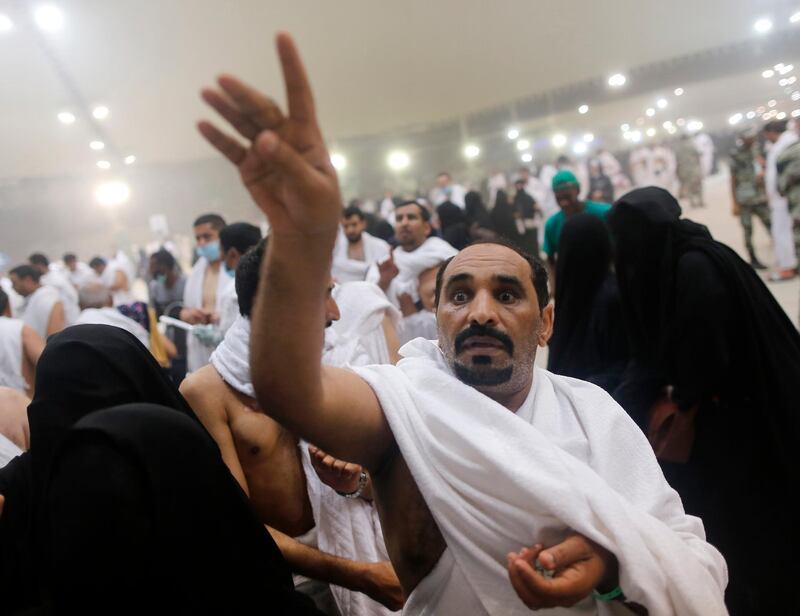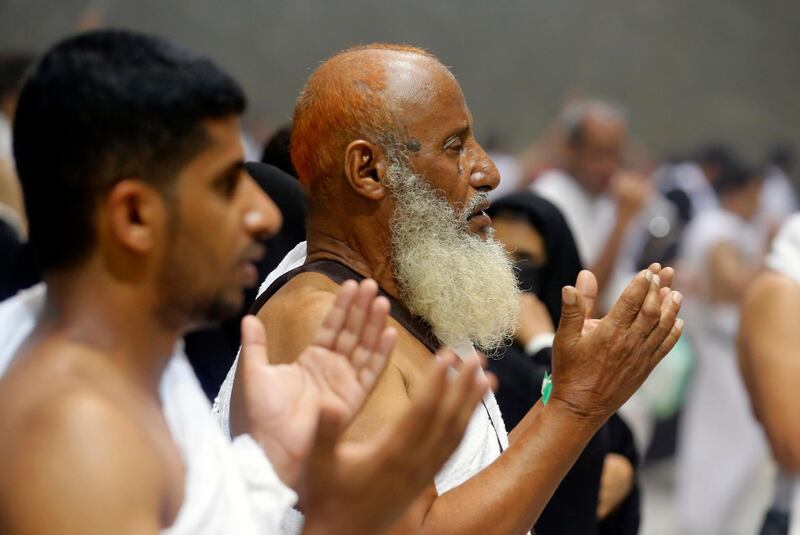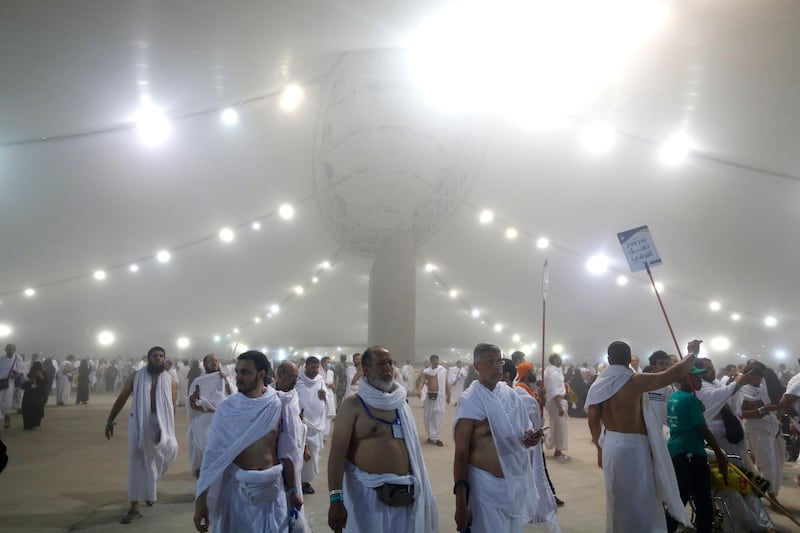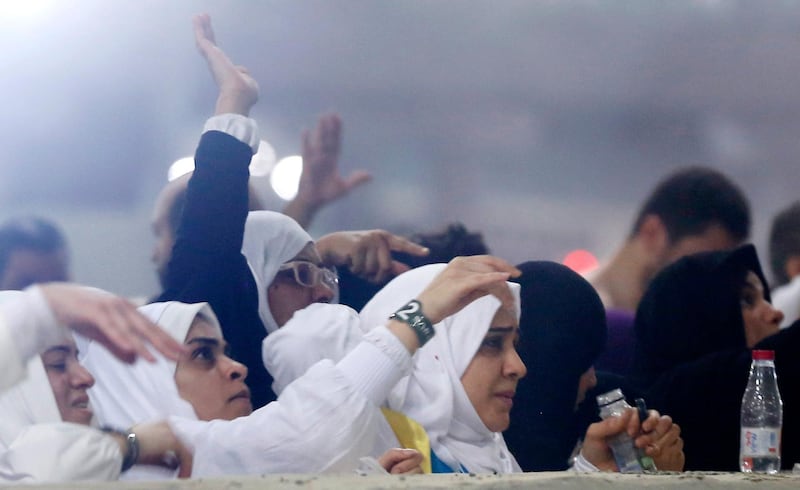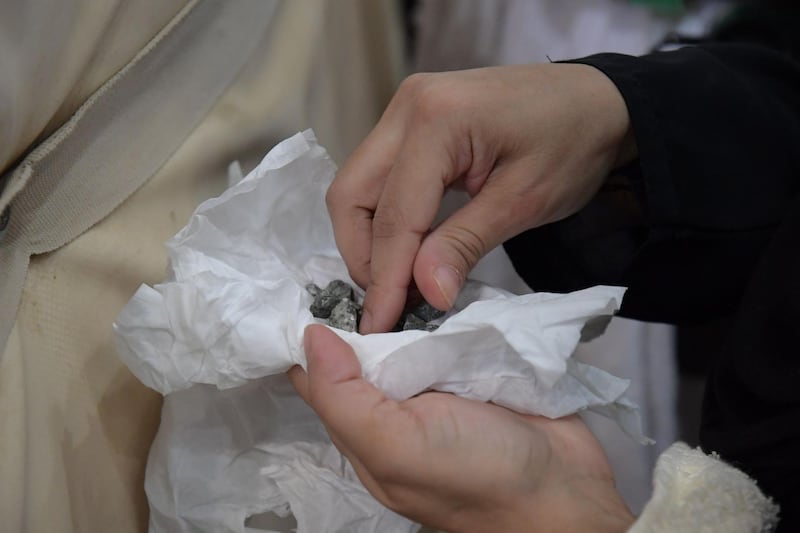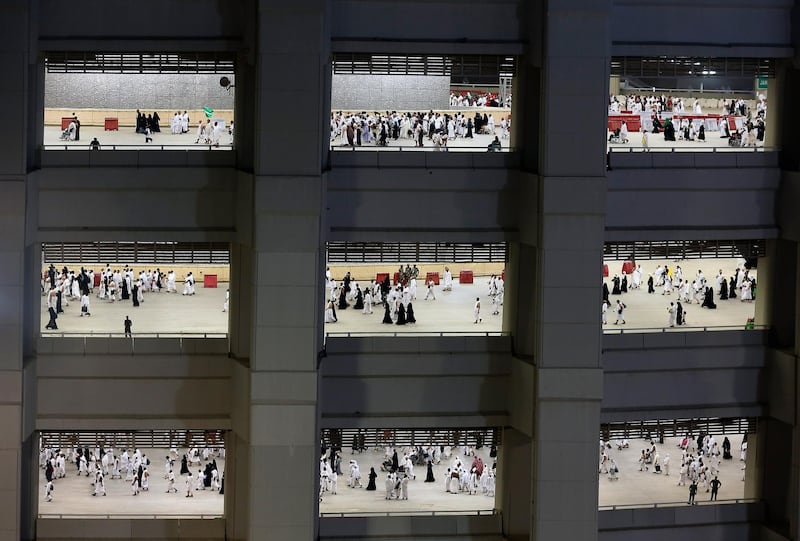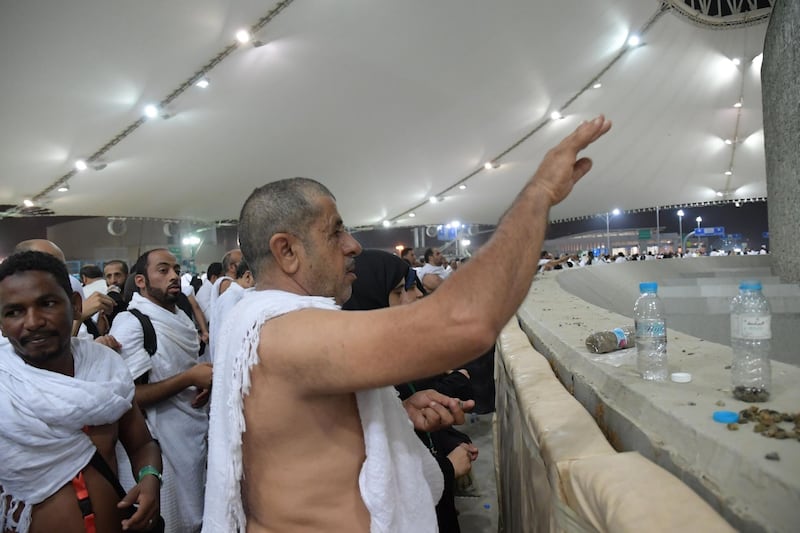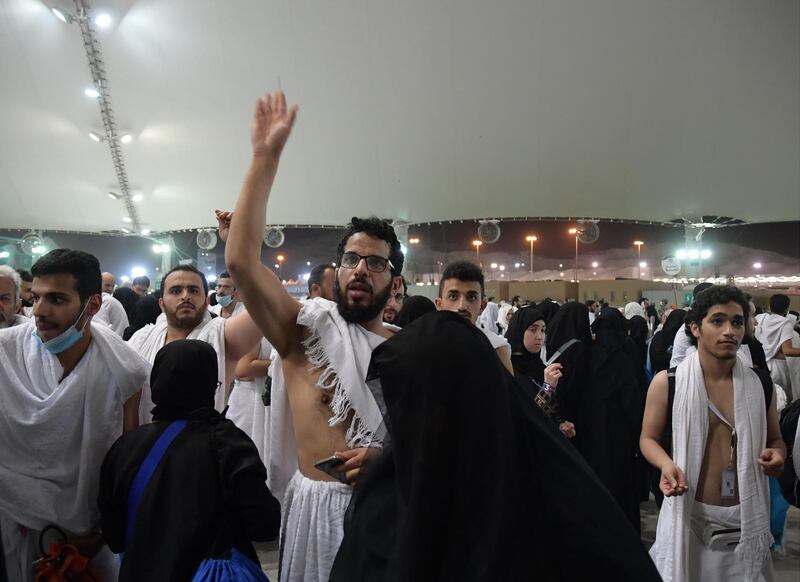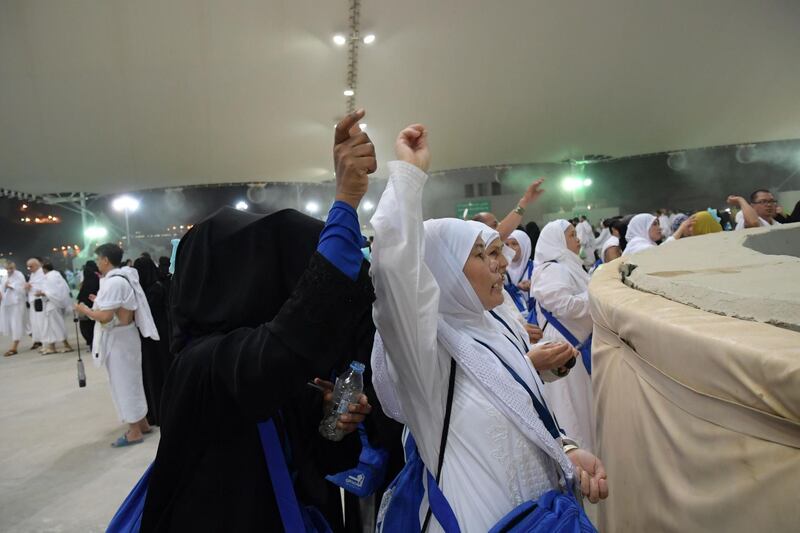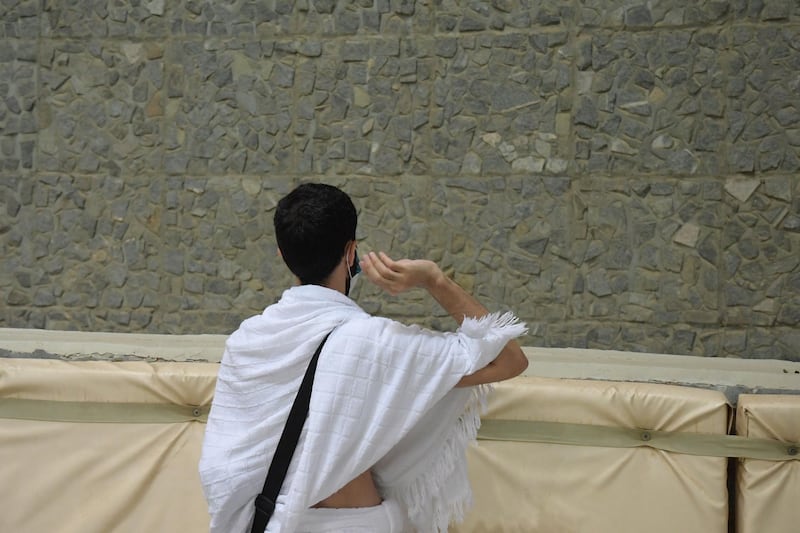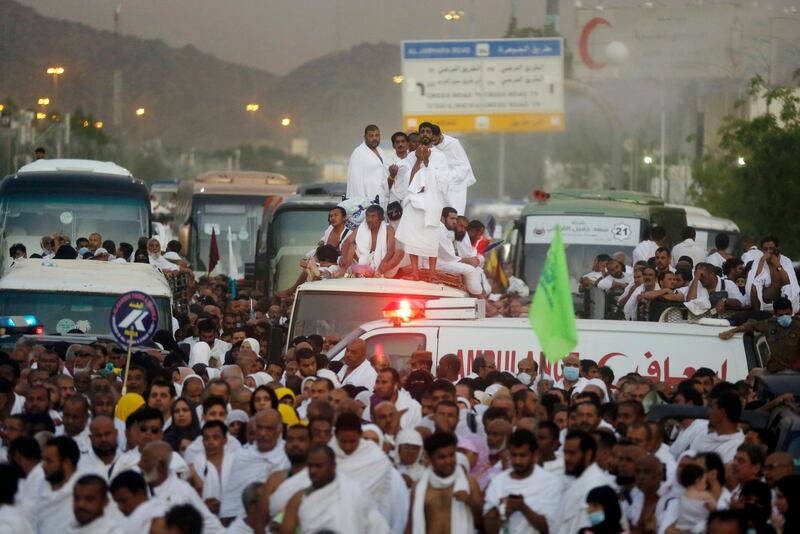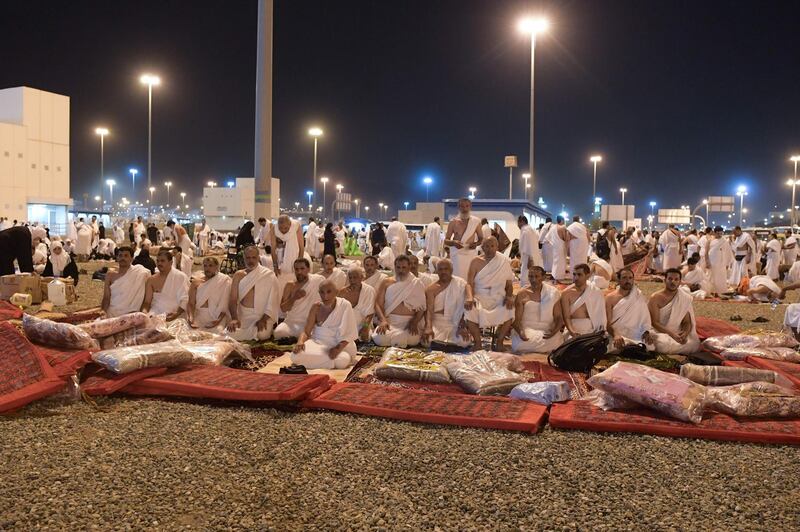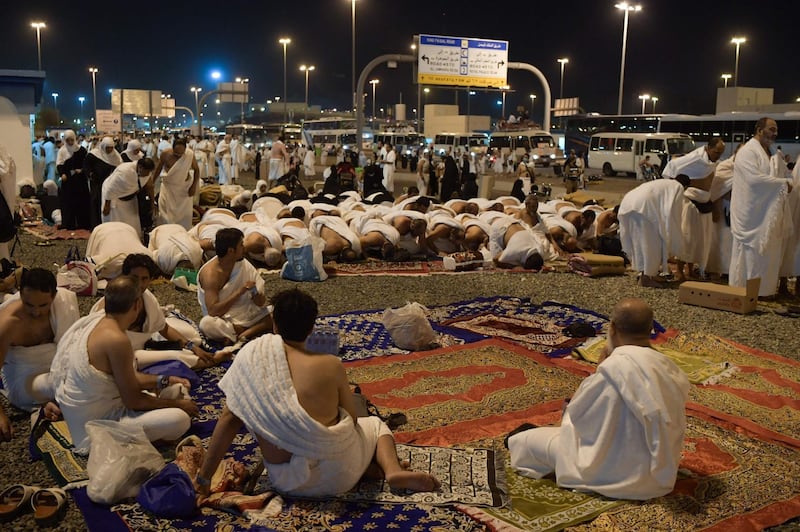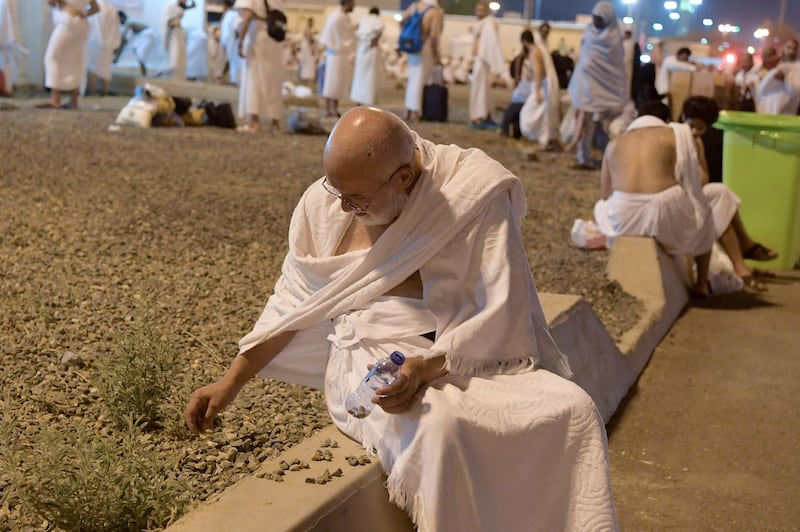Around two-and-a-half million pilgrims took part in a symbolic stoning of the devil on Saturday, marking the final days of the Hajj pilgrimage in Saudi Arabia and the start of the Eid Al Adha celebrations for Muslims around the world.
To mark the completion of the Hajj, male pilgrims shave their hair and women trim theirs to represent a spiritual renewal and rebirth. Male pilgrims will also remove the white terrycloth garments worn on the hajj and return to their usual attire.
The five-day Hajj pilgrimage is required of all Muslims once in their lifetime, if they are financially and physically able to make the journey.
Muslims around the world commemorate the end of Hajj with Eid celebrations, including distributing meat to the poor.
“I came from Sudan to Makkah where I performed the pilgrimage,” Mohammed Saleh said as he performed the final rites of Hajj in Mina. “We hope all pilgrims will be successful in their Hajj.”
Others too expressed a sense of gratitude to have performed the Hajj.
Saudi Arabia said 1.85 million pilgrims from more than 160 different countries travelled to the kingdom for the Hajj this year. Another 634,000 joined from within Saudi Arabia, nearly 70 per cent of them non-Saudi residents of the kingdom.
The Hajj is one of the largest religious gatherings on earth and a massive logistical challenge for the Saudi Arabian government to oversee each year. The Kingdom provides pilgrims with health care and buses for transportation, as well as meals, snacks and water along the routes of Hajj.
Mina is a sprawling valley near Makkah where thousands of air-conditioned tents are erected to house pilgrims for the final leg of the pilgrimage. Because of the narrow roads between tents, it is also where the deadliest Hajj disasters have occurred, including a 2015 stampede and crush that killed more than 2,400 people. Saudi Arabia's government has since widened roads and monitors the flow of people and crowds with tens of thousands of soldiers, guards, policemen and cameras.
Local media reported King Salman visited Mina on Sunday to supervise the services provided. He included among his guests for this year 200 survivors and relatives of victims of the mosque attacks in New Zealand, where a gunman opened fire and killed 51 people in March.
While following a route the Prophet Mohammed once walked, Muslims trace the rites of Hajj back to the prophets Ibrahim and Ismail, or Abraham and Ishmael as they are named in the Bible.
It is in Mina where Muslims believe Ibrahim’s faith was tested when God commanded him to sacrifice his son Ismail. Ibrahim was prepared to submit to the command, but then God stayed his hand, sparing his son. In the Christian and Jewish version of the story, Abraham is ordered to kill his other son, Isaac.
In Mina, pilgrims walk long distances on pedestrian-only streets towards a multi-story complex housing large pillars. There, they cast seven pebbles each at three pillars in a ritual meant to symbolise the casting away of evil and sin.
Muslims believe the rite offers the chance of atonement and an opportunity to erase past sins. The first two days of the Hajj are spent in Makkah and other areas around it in deep prayer, contemplation and worship.
